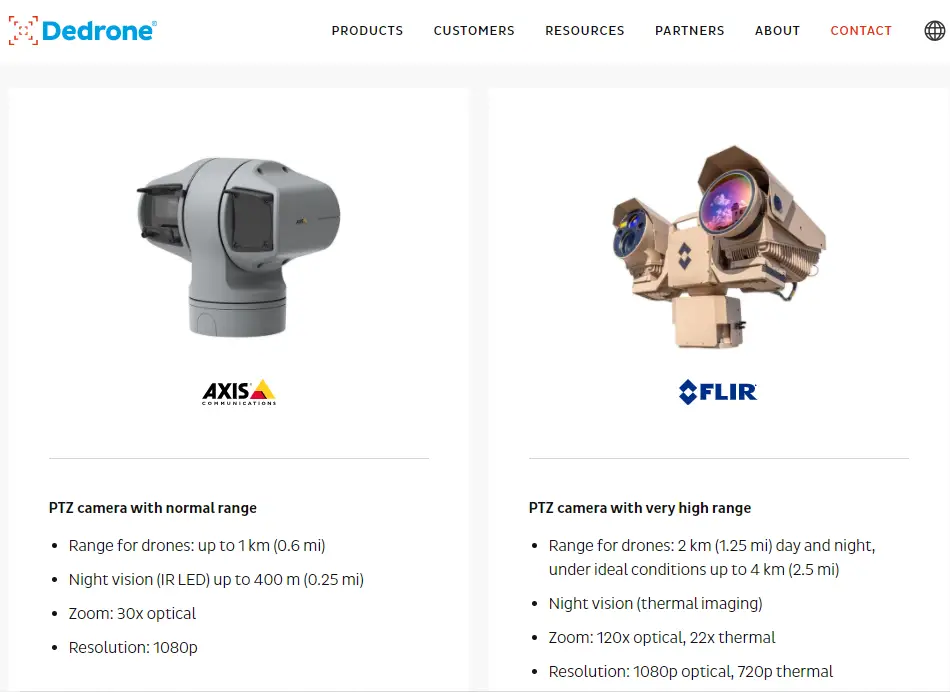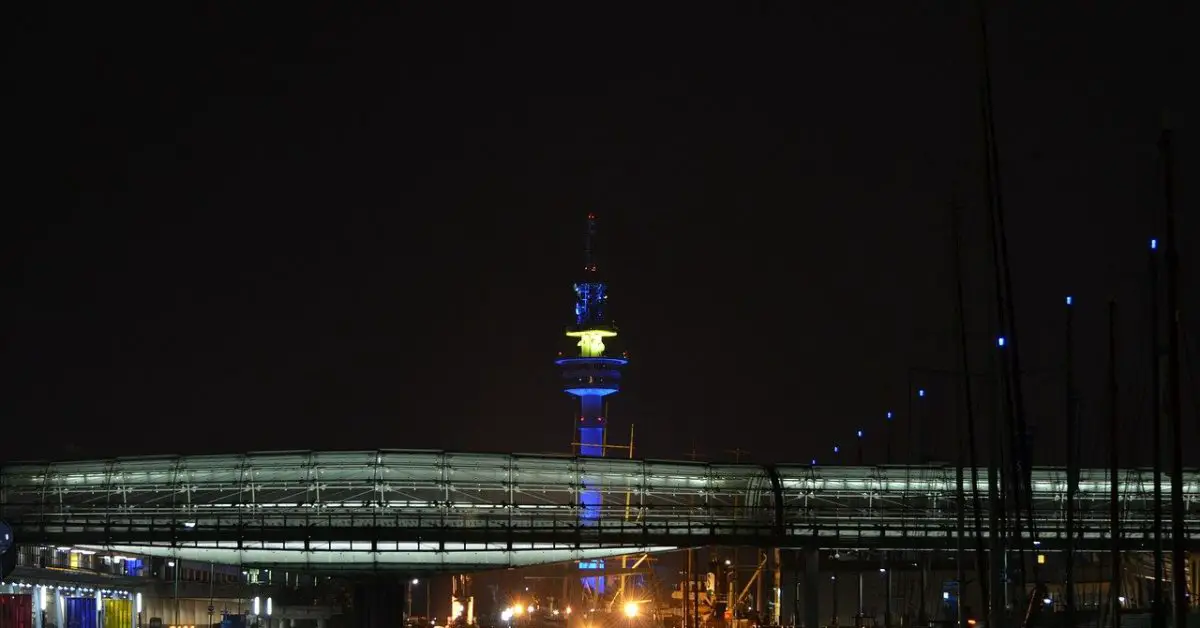Drones have been rising in popularity over the past few years. With this rise in popularity, many issues related to privacy become more and more relevant. Can drones be tracked? If so, why would drones need to be tracked?
Yes, drones can be tracked and so can the individual operating the drone depending on certain factors. PTZ cameras, radar and radio frequency technology are used either individually or in conjunction to track down a drone that may have been used for criminal purposes.
Why Would A Drone Need To Be Tracked?
There are several reasons why drone detection is important.
Drones may need to be tracked if used for criminal activities such as terrorism or the smuggling of contraband into restricted areas. This ensures the privacy and safety of others is respected.
Criminal purposes
Owning an unmanned aerial system(UAS) requires responsibility. Buying a drone with the intent to use it for criminal purposes is both terrible and irresponsible for someone to do.
Many choose to ignore this common drone ‘etiquette’ and break the rules.
Drones can pose a serious threat to places such as airports, prisons or stadiums.
Unmanned aerial vehicles(UAVs) can cause serious threat to airplanes due to the risk of being sucked into one of the plane’s engines. This can potentially cause the airliner that may be filled with passengers to crash.
Drones can also pose serious threats to prisons or stadiums as they can smuggle in small payloads of contraband such as weapons or drugs.
Those who plan on using their drones for these reasons need to be stopped. Law enforcement and the Federal Aviation Administration(FAA) do their best to track down these rogue drones and their operators before any harm can be done.
What Does Drone Detection Mean?
Drone detection is any technology that is used to detect a drone.
The detection methods we mention in this post each have different capabilities making them more or less effective depending on certain factors. These factors are things such as the drone’s size and the overall range of detection for that specific technology.
None of these drone detection methods are perfect and each have their flaws. Their effectiveness is greatly impacted depending on the environment they’re being used in.
When they’re used together, it can lead to a much more accurate result in detecting and tracking rogue drones.
What Technologies Are Being Used To Track Drones?
So how do you track a drone? There are three main technologies used to track down a drone. These are the most reliable solutions for detecting and tracking a rogue drone.
Detecting drones with radar
Regular radars are not capable of detecting small drones in the sky. New radars designed to detect these drones are being created by companies such as RobinRadar.
Radars work by emitting radio frequency waves 360 degrees in every direction. If this signal is reflected in any way by some sort of object, it is captured and amplified by the radar antenna to determine the size and shape of the object.
These signals are then compared to a database to find out the object’s characterisation.
The smaller the radar cross section(RCS), the harder it is for the radar to detect the drone. That is why high resolution radars are required to detect drones in the sky.
Detecting drones with radio frequency(RF)
Radio frequency spectrum is used by most drones today. This allows you to be able to control your drone with a controller over long distance.
RF communication starts when radio waves are generated from an RF transmitter and picked up, or “heard” by a receiver at another location.
Do You Know the RF Fundamentals (extremenetworks.com)
RF sensors are used to monitor frequencies transmitted between the drone and the pilot. This allows the individual tracking the drone to pinpoint the location of the drone.
This may also lead them to the drone pilot.
Detecting drones with PTZ cameras
PTZ cameras are capable of detecting drones in very large areas due to their zoom, tilt and pan features.

The camera has very high resolution allowing them to have evidence of not only the drones presence, but also what the drone may be carrying and the model of the drone.
These cameras are a great addition to the drone detection methods mentioned above, and all of these used together allows for a very efficient and accurate way of detecting drones.
The FAA’s Drone Tracking System
The Federal Aviation Association(FAA) is not legally allowed to bring down a UAS on their own which limits their options when trying to track down a drone.
What they can do however besides the methods mentioned above is to track the rogue drone’s registration numbers and run it through their registration database to determine who the owner of the drone is.
This, however, means that the FAA needs to either have the drones’ registration number or the drone itself.
The new system put in place in March of 2021 sees the introduction of new requirements. One of which the remote ID.
This will give each individual drone registered in the FAA’s system a unique identifier making it much easier for law enforcement and of course the FAA to determine who the owner of a drone is.
Related Article: Can You Fly Your Drone At Night in 2021?
Can You Fly Your Drone At Night in 2021?
Whenever someone wants to fly their drones, they will need to transmit their identity and location to the FAA through an online service provider.
Remote ID has however posed a privacy issue for some due to the fact that their personal info will be saved and shared to law enforcement agencies.
Drone operators have been given a three year transition period to begin using remote ID.
Do you think law enforcement should be allowed access to our personal information?
How Police Are Tracking Rogue Drone Operators
Drones have started to be used by criminals to deliver contraband such as drugs, cell phones, knives and even CD players inside the prison yard.
This has posed a serious threat to the safety of everyone inside the prison and it has influenced the rise of the ‘Drone Detective’.
Drones are now being armed with weapons to be used by terrorist groups, which furthers the growing need for detectives who specialise in finding drones and drone operators.
They use things like mobile phones that controlled said drone, sensors and controllers and analyse the data gathered on those to pinpoint the person who was controlling the drone and an some cases their exact location.
This is very effective as most of the digital items have GPS built into them.
Even if a drone has been destroyed, police can find the pilot with information in the ‘digital ecosystem’ to which the drone is connected, via devices like phones
How police catch drone-flying criminals – BBC Future
The mobile phone however proves to be the lead piece of evidence as there is usually a lot of information stored about the operator on them.
Can Stolen Drones Be Tracked?
Unless you placed your own tracker on your drone before if was stolen, then you may not be able to recover your drone. Leading drone companies such as DJI are sadly not allowed to tell you the drone’s flight logs when they’re synced even if it is stolen due to privacy laws put in place.
This may change in the future but for now we don’t believe there is any way to track a stolen drone.
Conclusion
With the new FAA registration laws, drones will be able to be tracked a lot easier, but it will be at the cost of our privacy. There are various ways to track drones, and we’re sure there will be plenty more with the continued rise of UAVs today.
We all value our privacy, but we might just have to settle with a loss of privacy for an increase in safety.
What do you think?
